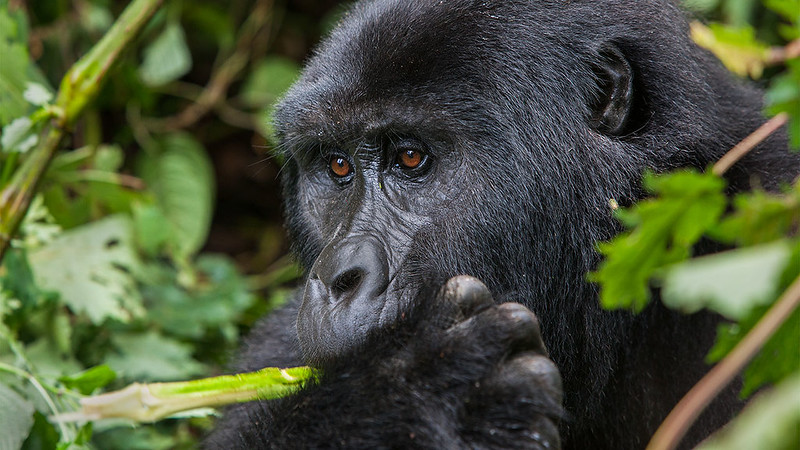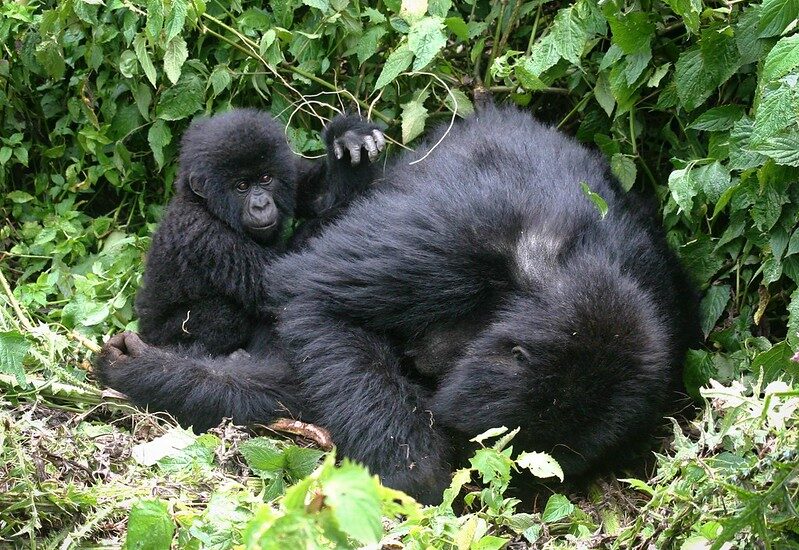Gorilla tracking permits for Nkuringo sector – Bwindi impenetrable National Park. You are currently sleeping…
Lilac-breasted roller
Lilac-breasted roller
One of Africa’s most colorful bird species is the lilac-breasted roller. It may be found in national parks and wildlife reserves throughout East and Southern Africa. The spectrum of colors on this bird is simply stunning. Males and females have pastel colors ranging from the lilac breast, olive heads, and scarlet cheeks to vivid turquoise and blue wings that shimmer in the sunlight as the bird glides through the grasslands.
Lilac-breasted rollers are real rainbows in the African sky. With its blue wings, green head, and purple breast, this little bird dazzles and hypnotizes observers. They also carry a richness of tradition and folklore in many civilizations.
In African folklore, the lilac-breasted roller is regarded as the “peace bird.”
Peace was regularly sacrificed when rulers professed peace in their kingdoms. It was known as the “bird of the sun,” and it played an important role in keeping ancient communities peaceful.
The roller bird family (also known as the Coraciidae) is an Old World bird family called after its exceptional ability to do aerial gymnastics in flight. This includes of rolling motions from side to side and quick, shallow dives from high heights.
There are four additional roller species in Africa (Purple Roller, Lilac-throated Roller, Broad-billed Roller, and European Roller), but the most colorful is the Lilac-breasted Roller.
Distribution and habitat
Lilac-breasted rollers require grassland or a savanna environment with open woods or small trees and bushes for breeding.
Diet
Carnivorous, lilac-breasted rollers eat beetles, spiders, scorpions, millipedes, centipedes, lizards, and other small animals. Before swooping down on their prey, they perch on high locations such as trees or telephone poles. Lesser food is devoured on the ground, while bigger prey is dragged up to their perch and thrashed against the tree before dying. Lilac-breasted rollers take advantage of periodic forest fires by foraging for animals escaping the flames near the approaching edge of the fire.
Reproduction
Rollers are monogamous and thought to mate for life. During a courting flight, the birds ascend steeply and almost stall. They plunge down with their wings closed, gaining velocity and leveling off, before opening their wings and rolling from side to side. Their wooing performance gave them the moniker “roller.”
The lilac-breasted roller nests in cavities. They will often make a nest 15-20 feet above ground in a natural tree hole or a cavity excavated by woodpeckers or kingfishers. They will also build their nests in ancient termite mounds. Both males and females zealously defend the nest, which is a simple flat grass pad.
Each season, lilac-breasted rollers deposit 2-4 eggs. The male and female will alternate incubating the eggs for 22-24 days. Both parents will also be in charge of feeding the altricial chicks for the following 19-20 days.



